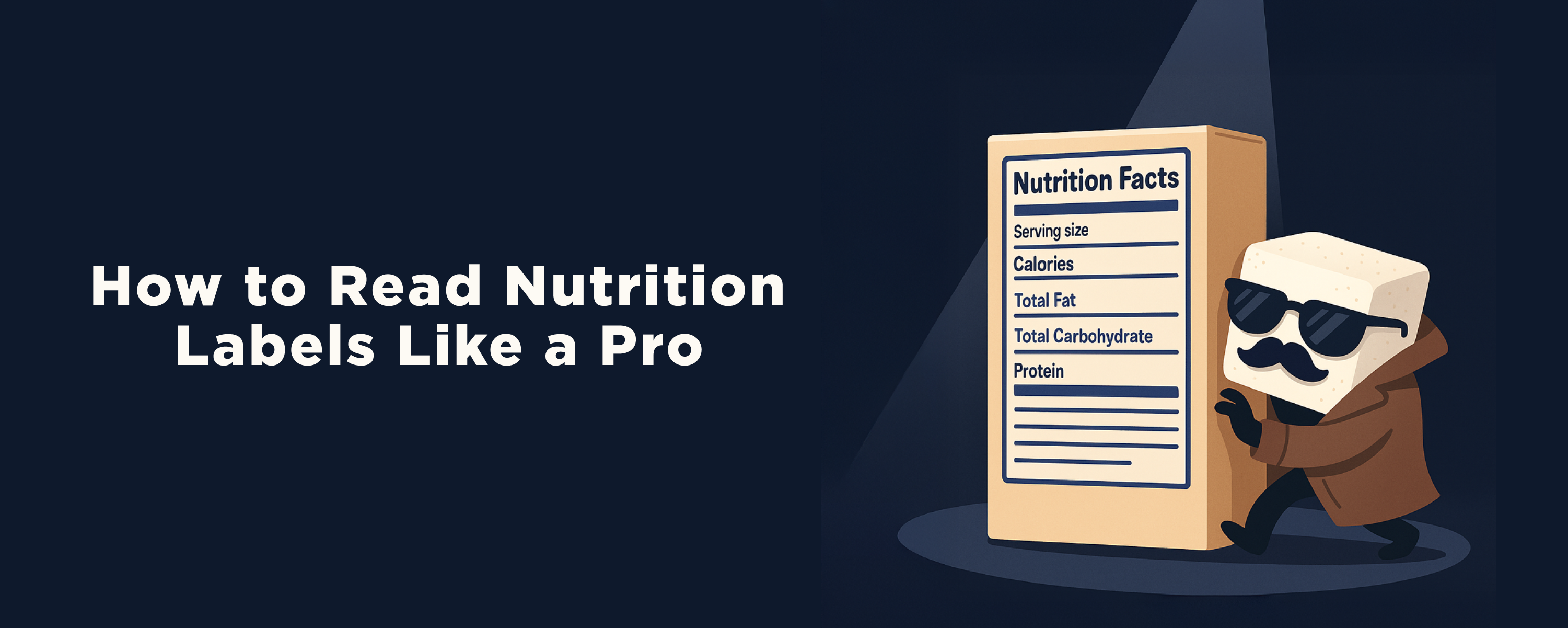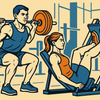How to Read Nutrition Labels Like a Pro

Nutrition labels are everywhere, but they're not always easy to understand. Despite being packed with information, they can feel overwhelming or confusing if you’re not sure what to look for. Yet with just a little practice, reading labels becomes a powerful tool for making confident choices in the grocery aisle and in your daily routine.
This guide breaks down the basics, so you can navigate labels more effectively and find foods that align with your lifestyle.

Start With the Serving Size
Always begin by checking the serving size. Every number on the label—calories, fat, carbohydrates, protein—is based on that specific amount. If the serving size is one cup, and you eat two cups, you’ll need to double everything on the label.
It’s common to assume a single package equals a single serving, but that’s often not the case. There are many food products that contain two or more servings per container such as:
-
Bottled drinks
-
Frozen meals
-
Small bags of chips
-
Protein bars
Being aware of the actual serving size helps you understand what you’re really consuming.
Check the Calories
Calories measure the energy a food provides. They are not good or bad by themselves, but understanding calorie content can help you balance your intake based on your personal needs.
When you’re comparing products, look beyond the packaging. A small item with a high calorie count per serving might not be the best fit for your goals.
Checking calories alongside serving size gives you a more accurate sense of what you’re choosing.
Look at the Macronutrients
Once you’ve looked at the calorie content, it’s helpful to understand where those calories are coming from. Macronutrients—protein, carbohydrates, and fats—each contribute to your total calorie count:
-
Protein provides 4 calories per gram
-
Carbohydrates provide 4 calories per gram
-
Fats provide 9 calories per gram
By looking at the macronutrient breakdown, you can better understand the food’s role in your diet.
-
Protein supports muscle maintenance and helps you stay fuller longer.
-
Carbohydrates supply quick energy, but watch for how much of that comes from sugar versus fiber.
-
Fats are more calorie-dense and support long-term energy. Unsaturated fats, like those found in nuts and olive oil, are often more balanced for everyday intake.
Matching the macronutrient profile of a food to your personal needs—whether that’s satiety, endurance, or recovery—makes your choices more intentional.
Pay Attention to Added Sugars
Not all sugars are the same. Natural sugars found in fruits and dairy come with fiber, vitamins, and minerals, which affect how the body processes them. For example, fiber slows the release of glucose into your bloodstream, reducing spikes in insulin levels.
In contrast, added sugars, ingredients like cane sugar, corn syrup, or dextrose, are introduced during processing and offer no additional nutrients. The label now lists these separately which makes them easier to spot.
According to the American Heart Association, the recommended daily limit for added sugars is 6% of your daily calories for both men and women, that’s about 6-9 teaspoons and 100-150 calories per day.
Be conscious of foods like sugary cereals, flavored yogurts, soft drinks, and even some pasta sauces in your daily intake. Being aware of how much sugar you're getting from everyday items helps you stay in control of your intake and feel better long term.
Scan the Fiber Content
Fiber plays an essential role in digestion, appetite regulation, and overall well-being. It’s also a nutrient many people don’t get enough of.
The Mayo Clinic recommends a daily fiber intake of about 14 grams of fiber for every 1,000 calories consumed. Yet the average intake is significantly lower.
Here are some common foods that are high in fiber
|
Food |
Serving Size (Grams) |
Total Fiber (Grams) |
|
Raspberries |
1 Cup (123g) |
8 grams |
|
Green Peas |
1 Cup (160g) |
9 grams |
|
Barley |
1 Cup (157g) |
6 grams |
|
Quinoa |
1 Cup (185g) |
5 grams |
|
Bran Flakes |
1 Cup (40g) |
7.3 grams |
|
Lentils |
1 Cup (198g) |
15.5 grams |
|
Black Beans |
1 Cup (172g) |
15 grams |
|
Chia Seeds |
1 Ounce (28.35g) |
10 grams |
Look for at least 2 to 3 grams of fiber per serving on packaged foods when possible. Prioritizing fiber can help you stay fuller longer and support regular digestion.
Read the Ingredients List
Beyond the numbers, the ingredients list tells you what’s really in your food. Ingredients are listed by weight, from most to least. A shorter list with simple, recognizable ingredients often means less processing.
One thing to watch for is hidden added sugars. They go by many names, including:
-
Brown sugar
-
Corn sweetener
-
Corn syrup
-
Fruit juice concentrates
-
High-fructose corn syrup
-
Honey
-
Invert sugar
-
Malt sugar
-
Molasses
-
Raw sugar
-
Sugar
-
Sugar molecules ending in “ose” (dextrose, glucose, lactose, maltose, sucrose)
-
Syrup
If a product contains several types of sugar near the top of the list, it’s a good sign that the food is more sweet than it may appear from the label alone.
Checking the ingredient list helps you get a fuller picture of what you’re eating—and avoid anything you’re trying to limit.
Putting it All Together
Learning to read nutrition labels like a pro puts more control in your hands. By understanding serving sizes, calories, macronutrients, added sugars, fiber, and ingredients, you can make informed decisions that better match your goals and lifestyle.
The next time you’re shopping, take a few extra moments to check the labels on the foods you pick up. With a little practice, you’ll start to spot great options faster and feel more confident about what you’re eating. Small informed decisions add up over time and can help support your overall wellness journey.








